Hello, fellow freelance writer. How many times, in this week alone, have you asked yourself some variation of the following question:
"How do I tweak my portfolio to get more paid work?"
I've been freelancing for a couple of years now, and I still ask myself this. There's always something we can improve, right?
No, I'm not about to tell you to do more "blog writing" or try networking with other freelance writers. Those are good tactics, but we're focusing on your portfolio website here..
Of course, you can Google this question or ask actual employers. Google will give you mostly generic answers, and if you can find the right employers to ask (editors, managers, marketing team leads), they might not have the time to give you detailed responses. Even if they do, is all of it actionable?
In case these tactics haven't worked for you, how about we try looking at a few actual freelance writer website examples? These are freelance writer websites that serve as their digital portfolio. It shows what they are capable of and what they have achieved so far.
Employers expect you to maintain certain standards when creating these writer websites for them to review. The best writer websites meet and surpass all those expectations, and that's what we'll be looking at in this article.
• 10 awesome freelance writer website examples…for you to get some creative ideas when you build your own
• A glimpse into how you can build an amazing writing portfolio within minutes
• An introduction to Authory — a portfolio builder that does way more than just build your portfolio (automatic importing AND backup of ALL your bylined content)
Freelance writer website examples you should see before creating your own site
Erin Rupp
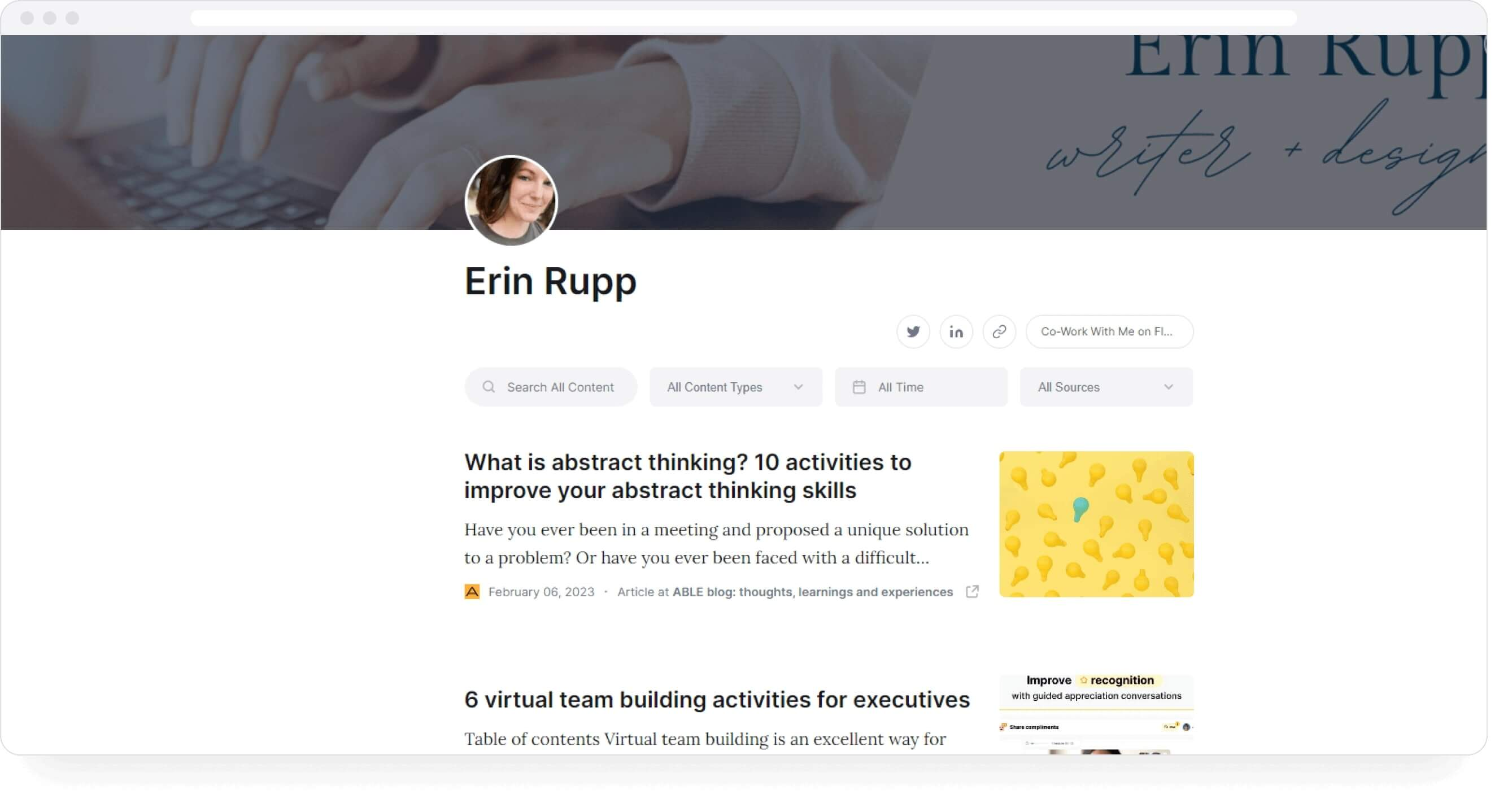
Erin Rupp calls herself a "writer and mindful productivity nerd." Her freelance writing explores different practices and notions around productivity, well-being, and self-development. A quick scroll will reveal an impressive depth of research she put into her writing services.
Alex Hargrave
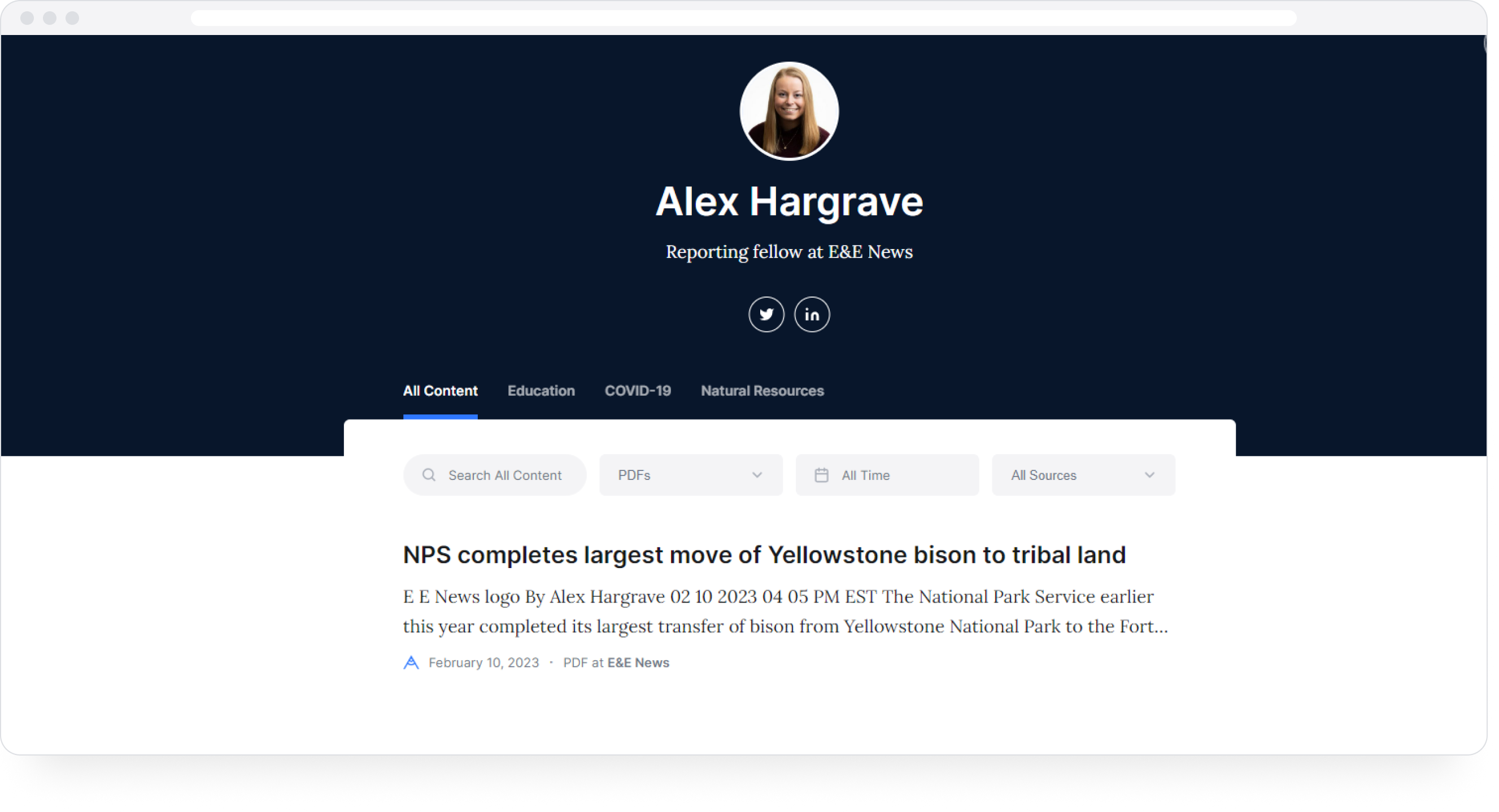
Alex Hargrave is a Reporting fellow at E&E News.
Joshua Poh

Joshua Poh writes for growing B2B SaaS companies in e-commerce, fintech, and digital analytics domains, some of these companies being Contentsquare, Coda.io, DashThis, and more.
Alexa Phillips
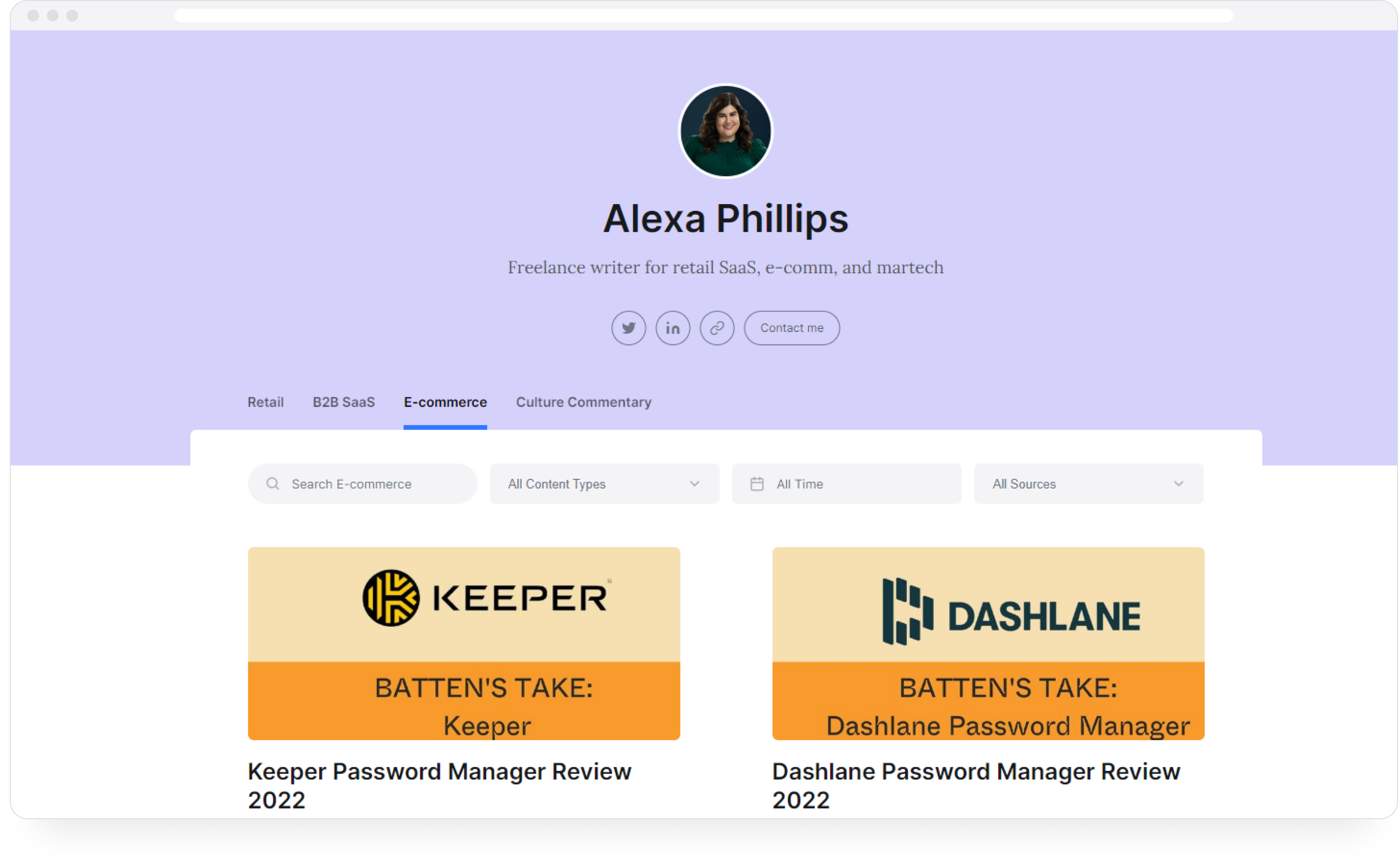
Alexa Phillips writes long-form content for retail SaaS, e-commerce, and MarTech companies, largely intended to build brand awareness, establish domain authority, and accelerate conversions. You'll find plenty of writing samples to quickly learn how good she is at her job..
Caissa McClinton

Caissa McClinton doesn't say much about herself in her portfolio, except that she went from craft blogging to technical writing. However, a quick look through her tech writing portfolio quickly establishes her writing skills as an authority in her field.
Ali M Latifi
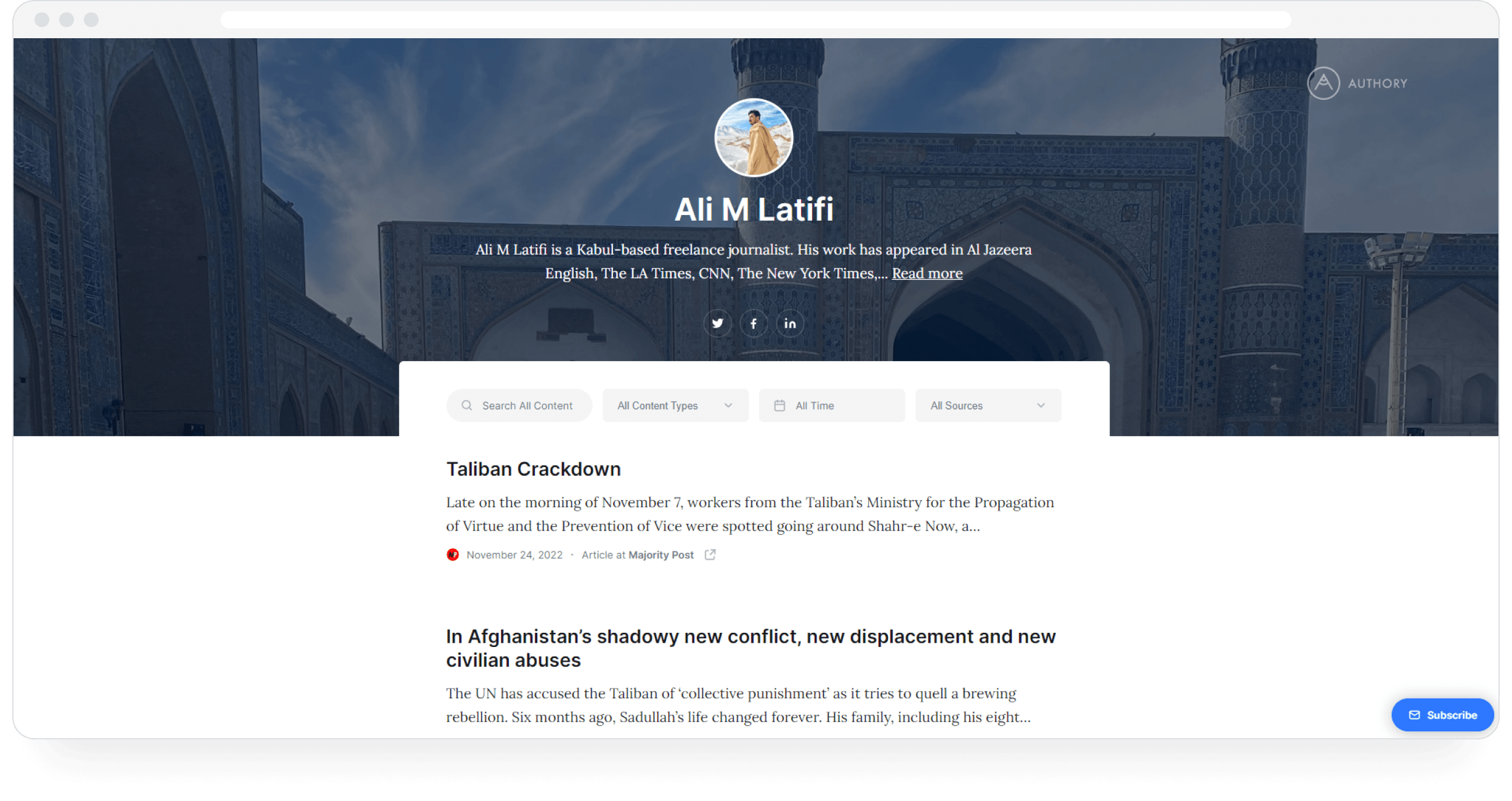
Kabul-based freelance journalist Ali M Latifi is a seasoned contributor to major journalistic names — Al Jazeera English, The LA Times, CNN, The New York Times, VICE, Deutsche Welle, Foreign Policy, and Business Insider. He has also appeared on TV and the radio for CNN, Deutsche Welle, PBS, Al Jazeera English, and NPR.
Kayla Hollatz
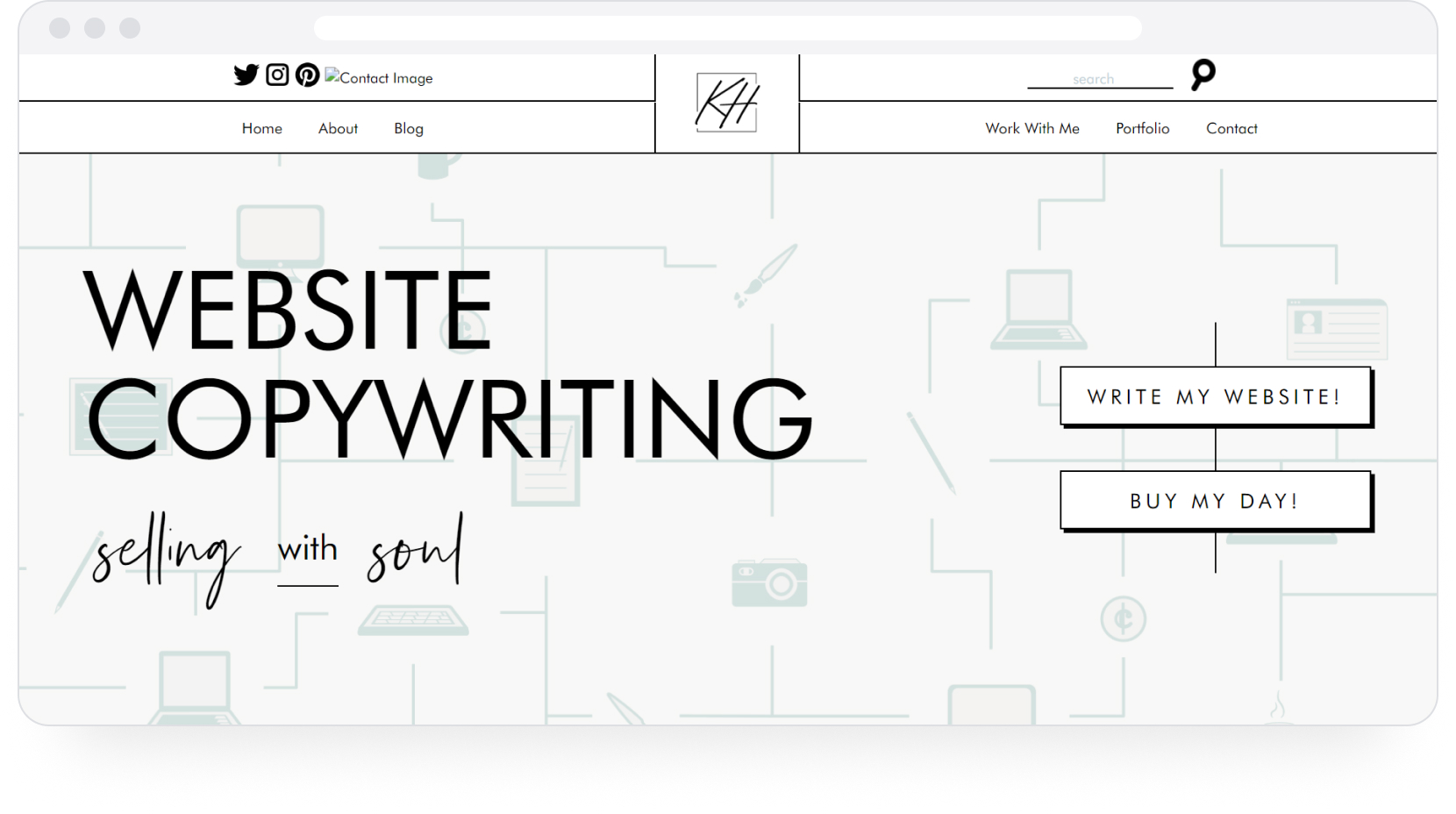
In a couple of scrolls, you learn about what Kayla does, what she has achieved, and real-life examples of her success. Additionally, she allows you to take a unique quiz to figure out what your brand voice should be depending on various factors — how old the business is, your preferred writing style, your strengths, and how you like your hot chocolate (a real question in the quiz!).
Muriel Vega
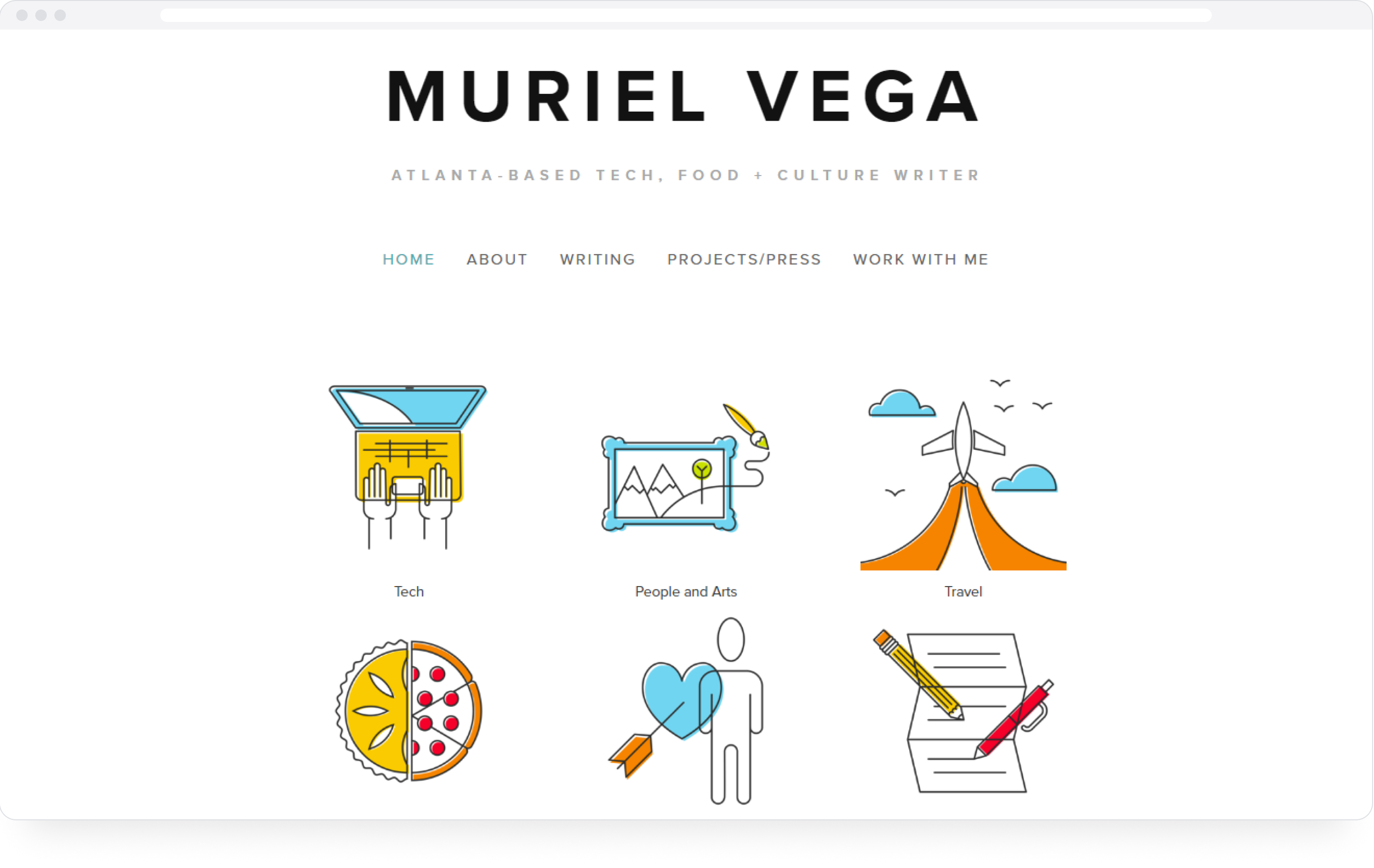
Muriel writes about tech, art, travel, food & more, and her design reflects this diversity. The playful whimsy and capricious coloring over a white background make you itch to click on the icons.
Uniquely, her portfolio is only one-fold long. You don’t have to scroll for any further information. Everything you need to explore her work can be clicked through via the icons or the links on top. However, she does have social icons at the bottom.
The entire layout gives off the impression of organized creativity. She conveys the message without needing too much space by virtue of design alone.
Jennifer Fernandez
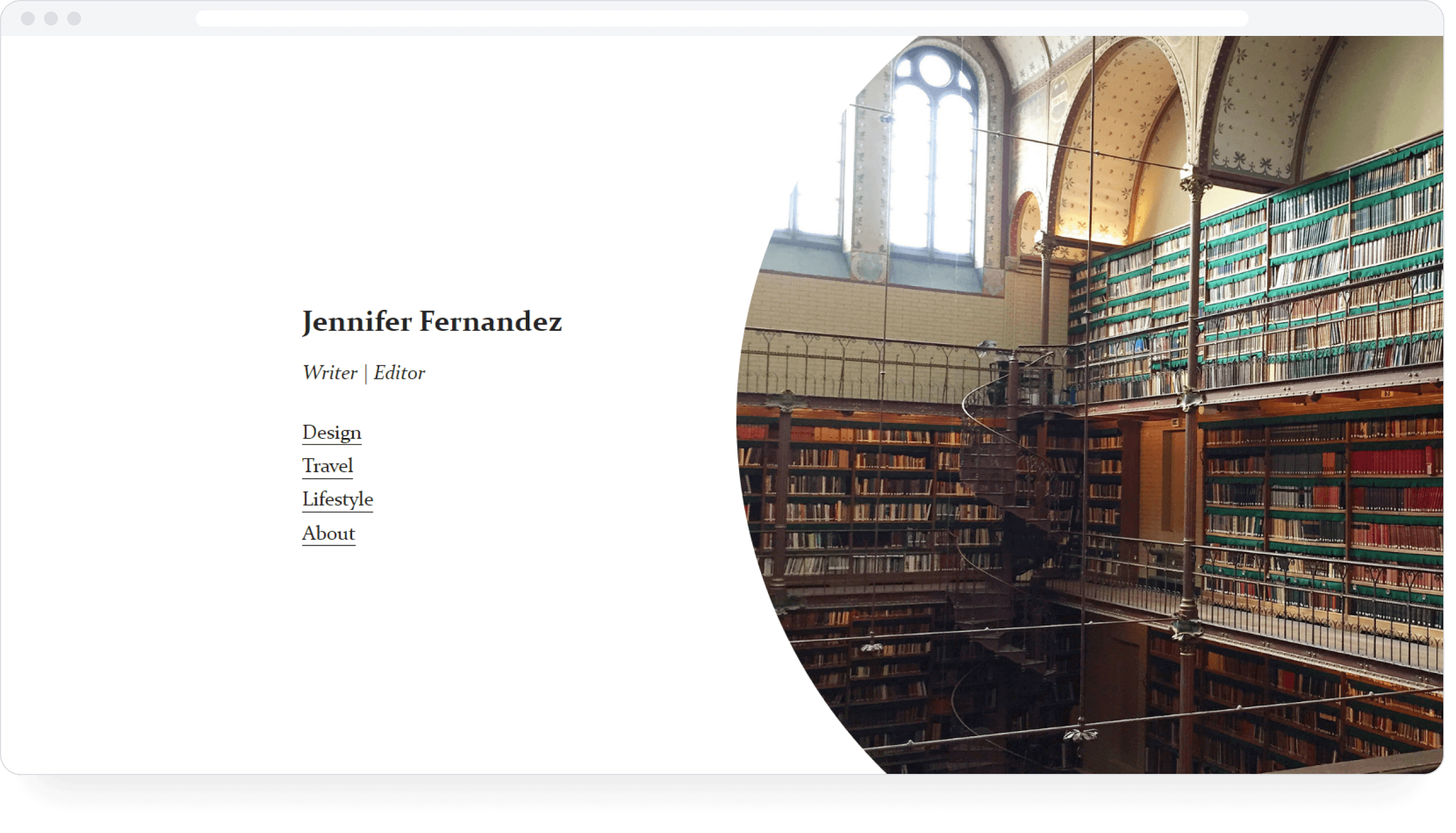
Jennifer Fernandez is a Brooklyn-based writer and editor. She has been on staff at Architectural Digest, Travel + Leisure, and Martha Stewart Weddings; her work has also appeared in The Wall Street Journal, Elle Decor, House Beautiful, Afar, Departures, and more. She has also worked with brands like Sotheby's International Realty, Home Depot, Zappos, Brooklinen, and others.
Ally Denton
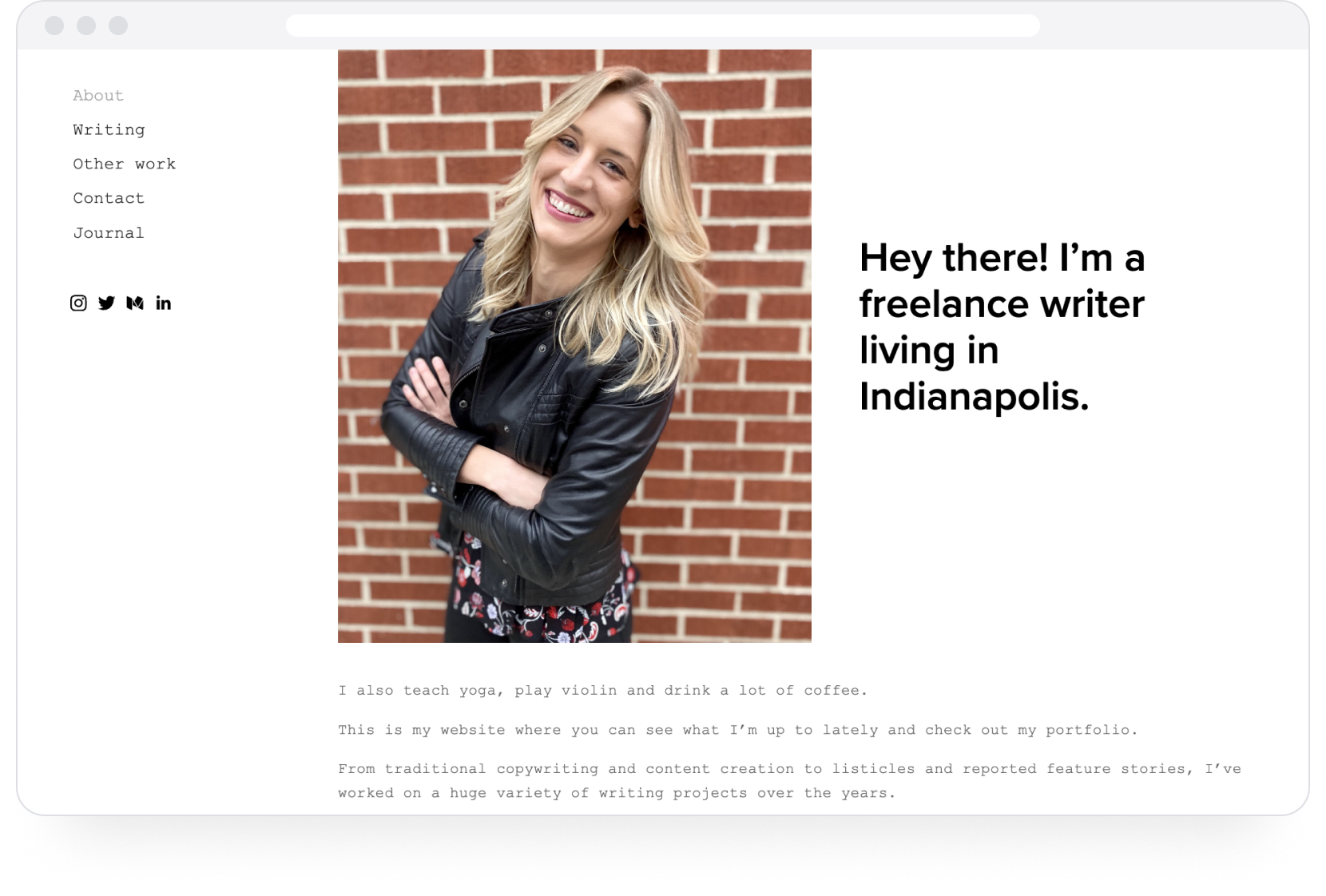
Ally offers everything from traditional copywriting and content creation to listicles and reported feature stories. On her writing portfolio site, she states that she is "particularly interested in writing for and about retail and eCommerce, fashion, beauty, arts & culture, and books."
She also teaches yoga and plays the violin.
Her writer portfolio website has plenty of samples to showcase her writing style.
How to build an incredible writing portfolio really quickly
There are numerous tools out there to help you with creating the writing websites of your dreams. However, not all of them are built equal.
In this piece, I'll be taking you through the process of creating a writing portfolio with Authory. However, make no mistake... there are plenty of other tools that can help you do the same. They just might not make your life as easy as Authory does, even beyond portfolio creation.
Don't worry, I'll explain why Authory is unique right after I show you how easy it is to set up an industry-best portfolio for creative writers.
Authory is a dedicated portfolio-building platform that allows users to create a professional portfolio within literal minutes. The best part is you don't have to build the entire website from scratch.
Authory doesn't just give you a digital interface to copy-paste your articles, it literally builds your portfolio for you. The tool automatically finds and imports ALL your published, bylined work from the internet. All you have to do is enter the URL of every website where your work exists (with a byline), and Authory will extract a copy of every single piece (text, audio, video, social media posts) authored/created by you.
To create a portfolio with ALL your content (in different formats), follow the steps below:
- Sign up for Authory (for FREE) using this link.

- Once I choose “Continue with Google” and enter my email ID, the tool automatically fills in the fields for my name (taken from my email data).

- I choose my profession as “Writer” and then click “Next Step.”

- In the next screen, I see that Authory has already automatically found the “sources” — websites where my bylined articles are published (nytimes.com & washingtonpost.com, for example). Of course, if it has missed a source, I can add it manually (just the site URL), OR I can choose to add all my sources manually.
Click “+Add.”
Authory will take up to 48 hours (often less) to import every bylined article to its database. Once the process is complete, you can segment your articles, videos, podcasts, audio files, and social media posts into relevant “Collections” — think of them as folders within your Authory database.
Creating a Collection on Authory
You can also create separate Collections for guest posts since guest posting goes a long way in establishing your expertise.
Once all your work has been imported by Authory, go to the “Collections” tab on your Authory dashboard.

- Click “+Create Collection.” You’ll see that I already have a set of Collections in the mix.

- Add a name and description to your new Collection. Click “Add.”

- You’ll be taken inside your new Collection. Click “Go to Content” next to the “Manually” option.
- A pop-up will emerge, in which you can specify keywords, sources (the target sites with your work), and content types (audio/video/text). Once rules are in place, all bylined content matching those rules will be automatically added to this Collection.

- Once you click “Go to Content,” you’ll be taken back to your main content dashboard. Since Authory has already imported your pieces, you can select the ones you want to slot into this particular Collection.

- Select the relevant files (articles in my case), click “+Add to collection” to the bottom right (highlighted above), find the name of the Collection you created, and click on it.
- Go back to the “Collection” tab you clicked before on the dashboard. You’ll see your new Collection.

Adding your Collection to your Authory portfolio
- Now that you’ve created a Collection(s), it’s time to add it to your portfolio. Go to the “Portfolio” option on your dashboard.

- Click the “Content” drop-down to the left. Click “Add collection.”

- Choose the Collection you just created — “New Collection,” in my case.

- And voila! Your new collection has been added to your portfolio.

- To check the final product, click “Go to portfolio” on the left.

- You’ll be taken to your portfolio in a separate window. This is what clients will see when you send them your Authory portfolio.

Why use Authory over other portfolio builders?
Let's take a look at what you get when you sign up for Authory (for free):
A self-updating portfolio (no need to keep adding new work manually)
Authory will AUTOMATICALLY import a copy of every bylined piece from every site into its own database.
These sites are called "sources." You add as many sources as you want, and every single bylined piece from every single source will be imported automatically.
You don't have to track down links to your published work (especially older pieces). As long as you remember the URL of the site where your work exists, Authory will collate all your content for you in one dashboard.
Authory can import content from behind most soft paywalls (as long as it is a bylined piece) and some hard paywalls. However, it cannot be used to import copies of articles, podcasts, and videos you haven’t created or featured in.
There isn’t any need to manually upload/copy-paste your content. That said, if you happen to have any non-bylined content, you can always do so manually in those cases.
Automated backups (never lose your content, ever)
All the content that Authory imports from different sources is saved permanently. You'll never have to worry about losing any of your published work. Even if the original website where it's published goes defunct for any reason, you'll always have a copy safely stored on Authory's server.
All backups are in the original format — text and/or media. No screenshots. This is super important because it lets you search through your content database, making it a valuable research tool.
Continued importing of past and future content (less effort for a 100% updated portfolio)
Once you enter a source, Authory won't just import your existing publications. Anything you publish on the same site (after you've fed its URL into Authory) in the future will also be imported automatically. In other words, Authory will import your past and future content.
Authory also sends email notifications for every new piece it imports, so you'll always know if something you submitted has been published.
Many Authory customers have also observed that Authory notifications reached their inboxes faster than Google Alerts.
That's not all. Authory portfolios also offer a set of secondary features that turn out to be incredibly useful:
- Ability to search through both your portfolio and your content database to find articles/audio/videos based on keywords. Potential clients and hiring managers can use this to look for topics on your portfolio, and you can use it to find specific pieces within your Authory content bank.
- Ability to create a custom domain with a click.
- All imported content can be downloaded as high-res PDFs or exportable as HTML files — no lock-in period.
- Get a custom domain and personalize your portfolio even further.
- Multiple, low-effort options for customization to make your portfolio visually appealing and easy to navigate.
- In-built analytics that provides real numbers on content performance (engagement, readership) across the web and popular social media sites every 30 days. You get to see how your readers/viewers are responding to your work.
- Allows creation of newsletters with a couple of clicks. After setup, Authory will automatically send your newly published content to subscribers.
- Widgets to display your personal portfolio on other sites, such as your personal website (if you have one).
- All portfolios are responsive & SEO (search engine optimization)-aligned.
Authory has been chosen by quite a few well-known names in the writing domain — 6-time Emmy award winner David Pogue, Steven Levy, Editor at Large, WIRED, and Brian Fung, a Technology Reporter at CNN, to name a very few.
Get started with Authory for free, and see if its am up your freelance writing career as it did for me.




